What's New
Displaying results 1491 - 1500 of 4052
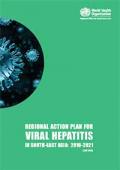
Resource | Publications,
The Action Plan (2016-2021) for addressing viral hepatitis in the WHO South-East Asia Region has been developed in consultation with Member States, community stakeholders, development partners, academia and professional societies. Drawing upon the Global Health Sector Strategy for Viral Hepatitis (2016–2021) and using the framework of universal health coverage to ensure that no one is left behind, the Action Plan provides a roadmap for priority areas of focus and interventions within the health and related sectors that are needed at the national level to mount an effective and efficient response to prevention, diagnosis, management and care of viral hepatitis.
With the goal of ending viral hepatitis as a public health threat by 2030, the Regional Action Plan will provide an actionable framework for implementing evidence-based interventions at scale. It will be informed through strategic monitoring of the response, that must be equitable and sustainable and allow for innovations for acceleration and reaching out to all in need with health services.
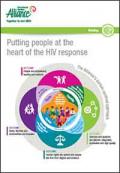
Resource | Publications,
The Alliance Strategy (2016-2020) HIV, Health and Rights and theory of change describe ‘using a person-centred approach’ to increase access to quality HIV and health services and to realise the human rights of people living with HIV and others affected by HIV.
As the HIV response becomes increasingly biomedical, we believe it must also be firmly embedded in rights-based and community-led approaches, and in the principles of Greater Involvement of People living with HIV and Positive Health, Dignity and Prevention, all of which have been the bedrock of the AIDS response so far.
At its most basic level, we look at health from an individual perspective, placing individuals at the centre of our HIV response. We consider health as much more than the absence of illness and think holistically about an individual’s full range of needs, desires, capacities and human rights.
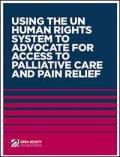
Resource | Tools,
Palliative care seeks to relieve suffering and improve quality of life for those with life-limiting conditions. It is a holistic approach that improves quality of life for patients and their families by addressing the psychosocial, legal, and spiritual problems associated with life-threatening illness. Palliative care has been shown to be highly effective in managing pain and physical symptoms, and can improve adherence to medications. It is a core component of health care and of the human right to the highest attainable standard of health. It is also connected with a range of other rights and is increasingly recognized as a stand-alone right.
This toolkit is intended to serve as a resource for organizations considering advocating for increased access to palliative care and pain relief as a human right within the United Nations human rights system. It clarifies what human rights are and how they are relevant to palliative care, as well as what the UN Human Rights System is. It also presents why and how to engage with the UN human rights system to advocate for increased availability and accessibility of quality palliative care and pain relief.
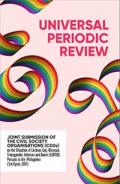
Resource | Publications,
Violations of the rights of LGBTIQ persons persist though not consistently documented. Denial of access to public services including education, health care and housing exist. Negative stereotypes against LGBTIQ persons are perpetuated through policies and practices of some government officials and private actors such as schools. Hate related violence, including killings of LGBTIQ persons, have been reported. Meanwhile, there is an absence of a comprehensive national legal framework recognizing the rights of LGBTIQ persons, prohibiting SOGIESC-based discrimination and ensuring provision of adequate services for LGBTIQ persons in difficult situations.
This report was prepared by LGBTIQ civil society organizations (CSOs) after series consultations to identify priority issues and recommendations.
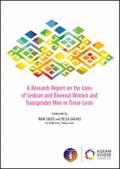
Resource | Publications,
The report documented various narratives of psychological and physical abuse, including domestic violence, forced marriage, and attempts by family members to change their sexual orientation and gender identity. It looks into other social and economic factors, such as financial dependence on families, and how these affect their lives in Timorese society. Among its recommendations were for government and civil society to facilitate leadership-building opportunities and support groups and to provide lesbian and bisexual women and transgender men "opportunities to enhance their own capacities to help make them active and capable advocates for their own rights."
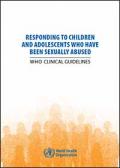
Resource | Guidelines,
Sexual abuse, including sexual assault or rape, of children and adolescents is a major global public health problem, a violation of human rights, and has many health consequences in the short and long term.
This guideline aims to provide evidence-based recommendations for quality clinical care for children and adolescents who have, or may have, been subjected to sexual abuse, in order to mitigate the negative health consequences and improve their well-being. The objectives are to support health-care providers to provide quality, immediate and long-term clinical care and to apply ethical, human-rights-based and trauma-informed good practices in the provision of such care. Where relevant for provision of clinical care and where there is supporting evidence, sex-based differences and gender-based inequalities are flagged.
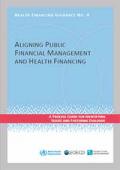
Resource | Guidelines,
This guide lays out an illustrative process for health and finance authorities to engage in productive dialogue, assess the current situation in terms of how aligned the public financial management (PFM) system and health financing system are, and work towards a joint policy roadmap to improve alignment. It builds on a previous document “Aligning public financial management and health financing: sustaining progress toward universal health coverage,” which considers how PFM and health financing systems can be better aligned in support of UHC, and provides a framework to examine common challenges, as well as offering strategies to address them. This guide can serve as an entry point for that dialogue, and can facilitate a structured approach for health, finance and other stakeholders to discuss underlying issues before implementing system changes that might affect the PFM and health financing system.
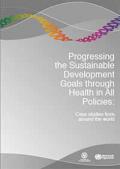
Resource | Publications,
This book, arising from the Adelaide conference, is intended for the international Health in All Policies (HiAP) community – including people who are already practising HiAP and aim to sustain it, helping those who are thinking about doing HiAP to progress, and helping others to start planning HiAP.
The case studies in this book highlight the diversity of applications of HiAP and its multiple processes, dimensions and outcomes in different countries and regions and political systems. It includes experiences of HiAP at the city level, such as in Quito, Ecuador, at the regional/state level such as in California and the national level, for example in China. While there are many different versions of and contexts for HiAP, there are also some shared lessons across countries and regions.
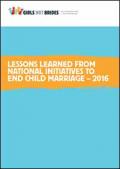
Resource | Publications,
Our 2016 report, Lessons learned from national initiatives to end child marriage, explores what lessons can be drawn from the increasing number of national strategies, action plans, and country-wide initiatives to address child marriage around the world, particularly in relation to their implementation across sectors.
This report considers the experiences in 11 countries: Bangladesh, Burkina Faso, Chad, Egypt, Ethiopia, Ghana, Mozambique, Nepal, Uganda, Zambia and Zimbabwe. It will be of particular interest to Girls Not Brides members in countries where (i) a national initiatives is still in development, (ii) is about to be rolled out, or (iii) is currently being implemented.
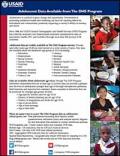
Resource | Fact Sheets,
Adolescence is a period of great change and opportunity. Investments in promoting adolescent health and wellbeing can have far reaching effects for individuals and communities, positively impacting a country’s ability to develop and thrive.
Since 1984, the USAID-funded Demographic and Health Surveys (DHS) Program has collected, analyzed, and disseminated nationally representative data on population, health, HIV, and nutrition through more than 300 surveys in 90 countries.





